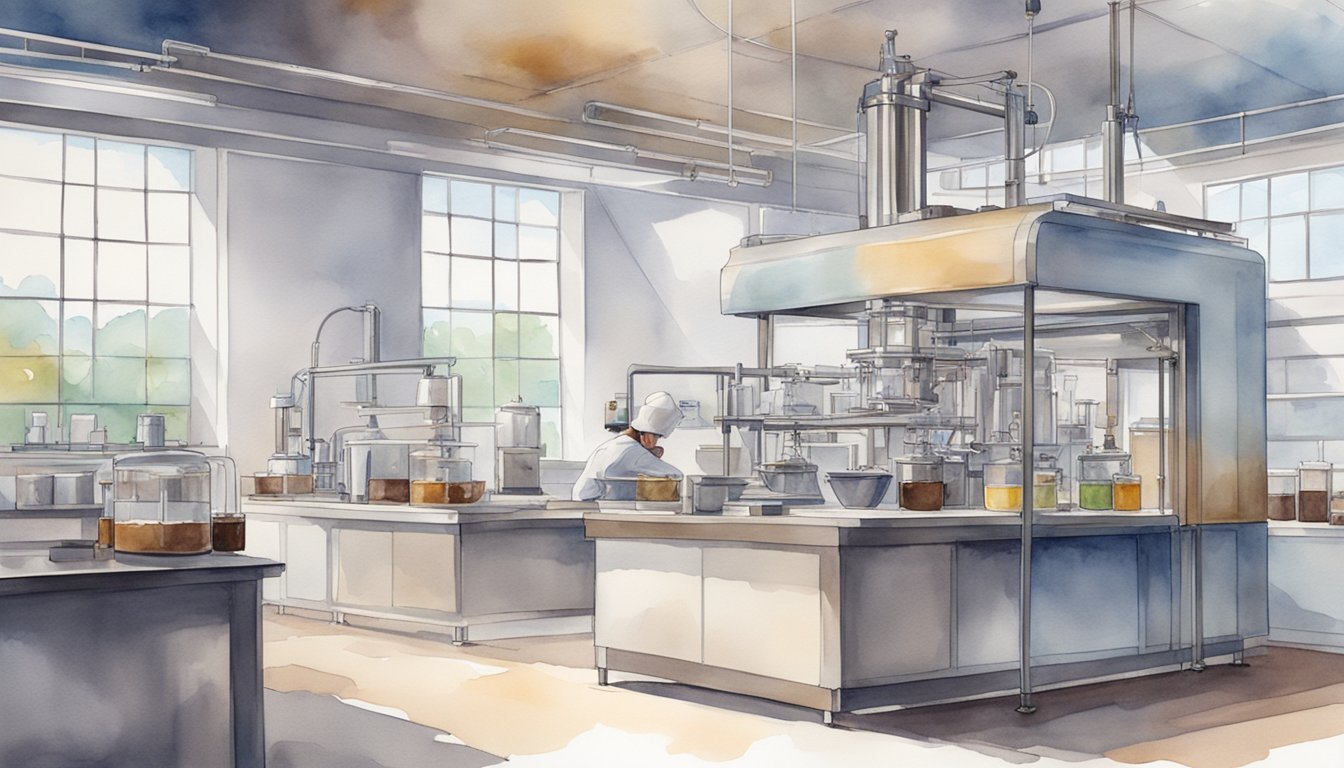History of Chocolate
The rich tapestry of chocolate’s past extends from ancient Mesoamerican civilizations to European courts, underscored by its deep connection to cultural traditions, economics, and the spread of new ideas.
Origins in Mesoamerica
The inception of chocolate can be traced to the deep rainforests of Central and South America, where the cacao tree, Theobroma cacao, was revered by ancient cultures. The Olmec, one of the earliest civilizations of Mesoamerica, are believed to be the first to turn the cacao plant into chocolate as far back as 1500 BC. However, it was the Maya and later the Aztecs who ingrained chocolate into their societies, not only as a beverage but also as a form of currency and offering to the gods. The Mayans called their ceremonial drink made from crushed cocoa beans, “xocolatl,” meaning “bitter water.”
By fermenting, roasting, and grinding the seeds of the cacao into a paste, Mesoamericans laid the foundation for the Mayan and Aztec empires’ traditional chocolate consumption. Recent discoveries in the Santa Ana-La Florida site of present-day Ecuador suggest that the Mayo-Chinchipe culture also played a pivotal role in domesticate cacao as early as 5,300 years ago.
Journey to Europe
The journey of chocolate from the New World to Europe began with the arrivals of Spanish explorers such as Christopher Columbus and Hernán Cortés, who encountered the cacao during their conquests in Mesoamerica. The Spanish conquistadors introduced chocolate to Spain, where it rapidly became a luxury commodity and a treasured indulgence among the European nobility. It was in Spain where chocolate underwent significant transformation, as sugar and other spices were added to offset its natural bitterness.
By the late 16th and 17th centuries, chocolate had spread throughout Europe, reaching France and other European courts, marking the beginning of chocolate’s globalization. The European encounter with chocolate spurred its colonial propagation across Africa, Asia, and back to Central and South America. Over time, the method of preparation evolved, giving rise to a wider array of cocoa products and continued to be a source of innovation and enjoyment throughout the world. As chocolate became more accessible, it was incorporated into various culinary traditions, influencing confections and desserts worldwide. While chocolate’s journey intertwined with global trade, other sweets, such as those with a baklava origin, also evolved alongside it, enriching diverse dessert cultures. Today, chocolate remains a beloved ingredient, shaping both traditional treats and modern innovations in the confectionery industry. The versatility of chocolate has led to its incorporation into countless desserts, from rich pastries to indulgent beverages. In particular, donut delights around the world have embraced chocolate in various forms, whether through glazes, fillings, or drizzles, enhancing their appeal across different cultures. As new techniques emerge, chocolate continues to inspire creativity in baking and confectionery, ensuring its enduring popularity for generations to come.
Modern Chocolate Innovation

The landscape of chocolate saw a significant transformation with the emergence of solid chocolate forms and wide-scale industrialization. These developments shifted chocolate from a luxury item to a widely available treat.
Development of Solid Chocolate
The creation of solid chocolate owes much to the Dutch chemist Coenraad van Houten. In 1828, he invented the cocoa press which successfully separated cocoa butter from cacao nibs, leaving behind a powdery substance that could be formed into chocolate bars. Following this innovation, J.S. Fry and Sons in 1847 crafted the world’s first solid chocolate bar by recombining cocoa powder and cocoa butter with sugar and melding the ingredients into a paste before solidifying.
Industrialization and Brands
The mass production of chocolate was revolutionized by companies such as Hershey, Cadbury, and Nestlé, which started creating chocolate as both a candy and a beverage, making it an integral part of global diets. Hershey expanded the accessibility of milk chocolate after developing a formula that could produce chocolate bars en masse. In England, Cadbury’s Easter eggs and Fry’s chocolate bar selection played significant roles in making chocolate a part of festive traditions. The Swiss contributions cannot be underplayed, with Swiss chocolatier Rodolphe Lindt’s invention of the conching machine allowing chocolate to achieve a silkier texture, enhancing flavor and making it a more luxurious experience to consume.

